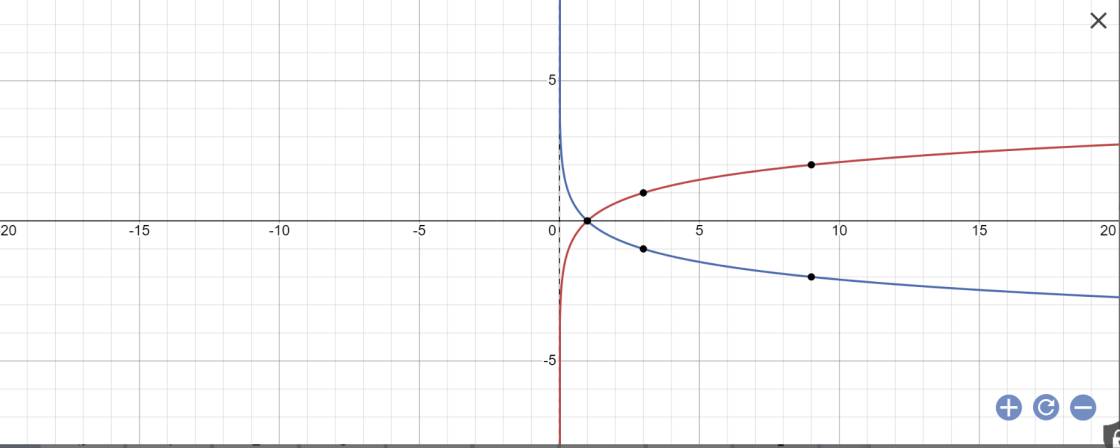Hãy nhập câu hỏi của bạn vào đây, nếu là tài khoản VIP, bạn sẽ được ưu tiên trả lời.

Chọn D. Bởi vì hàm số ln x luôn luôn dương nên chắc chắn sẽ đồng biến trên TXĐ của nó

\(\dfrac{\sqrt{3}}{2}< 1;\dfrac{\sqrt[3]{26}}{3}< 1;\pi>1;\dfrac{\sqrt{15}}{4}< 1\)
Hàm số đồng biến là: \(log_{\pi}x\)
Hàm số nghịch biến là: \(\left(\dfrac{\sqrt{3}}{2}\right)^x;\left(\dfrac{\sqrt[3]{26}}{3}\right)^x;log_{\dfrac{\sqrt{15}}{4}}x\)

a, Điều kiện: \(2^x\ne3\Rightarrow x\ne log_23\)
Vậy D = R \ \(log_23\)
b, Điều kiện: \(25-5^x\ge0\Rightarrow5^x\le5^2\Rightarrow x\le2\)
Vậy D = \((-\infty;2]\)
c, Điều kiện: \(\left\{{}\begin{matrix}x>0\\lnx\ne1\end{matrix}\right.\Rightarrow\left\{{}\begin{matrix}x>0\\x\ne e\end{matrix}\right.\)
Vậy D = \(\left(0;+\infty\right)\backslash\left\{e\right\}\)
d, Điều kiện: \(\left\{{}\begin{matrix}x>0\\1-log_3x\ge0\end{matrix}\right.\Rightarrow\left\{{}\begin{matrix}x>0\\log_3x\le1\end{matrix}\right.\Rightarrow\left\{{}\begin{matrix}x>0\\x\le3\end{matrix}\right.\Rightarrow0< x\le3\)
Vậy D = \((0;3]\)

Hàm số a,b là các hàm số logarit
a: \(log_{\sqrt{3}}x\)
Cơ số là \(\sqrt{3}\)
b: \(log_{2^{-2}}x\)
Cơ số là \(2^{-2}=\dfrac{1}{4}\)

\(a,D=R\\ b,2x-3>0\\ \Rightarrow x>\dfrac{3}{2}\\ \Rightarrow D=(\dfrac{3}{2};+\infty)\\ c,-x^2+4>0\\ \Rightarrow x^2< 4\\ \Leftrightarrow-2< x< 2\\ \Rightarrow D=\left(-2;2\right)\)

Hàm số \(y=log_cx\) nghịch biến
\(\Rightarrow0< c< 1\) và các hàm \(y=log_ax,y=log_bx\) đồng biến nên \(a,b>1\)
Ta chọn \(x=100\Rightarrow log_a>log_b100\Rightarrow a< b\Rightarrow b>a>c\)
\(\Rightarrow B\)

Vì \(\sqrt{2}\simeq1,414>1\)
⇒ Hàm số \(y=\left(\sqrt{2}\right)^x\) đồng biến trên R.
⇒ Chọn C.

Vì \(\dfrac{1}{e}\simeq0,368< 1\)
\(\Rightarrow y=log_{\dfrac{1}{e}}\left(x\right)\) nghịch biến trên D = \(\left(0;+\infty\right)\)
Chọn C.
0<1/e<1
=>\(log_{\dfrac{1}{e}}\left(x\right)\) nghịch biến
=>C